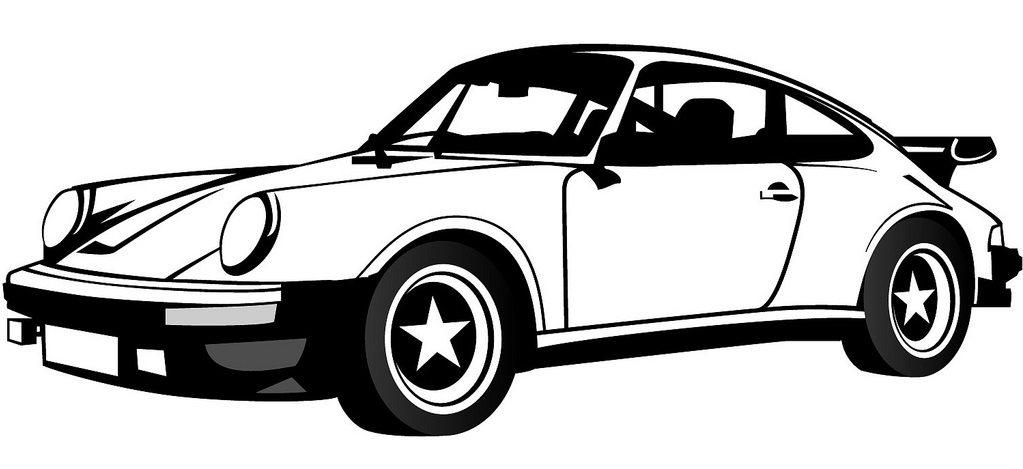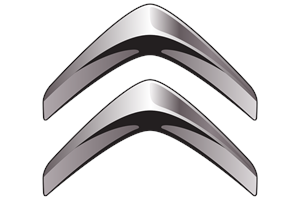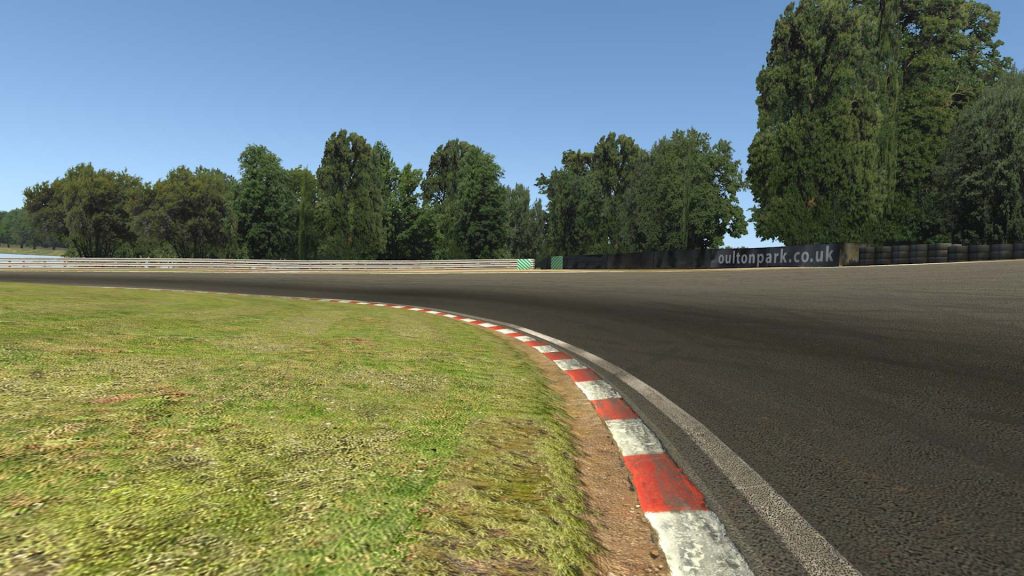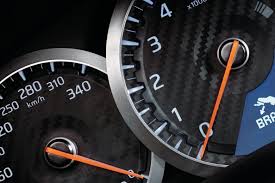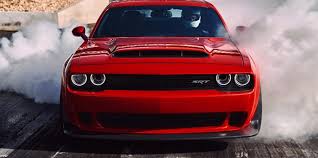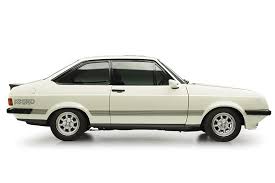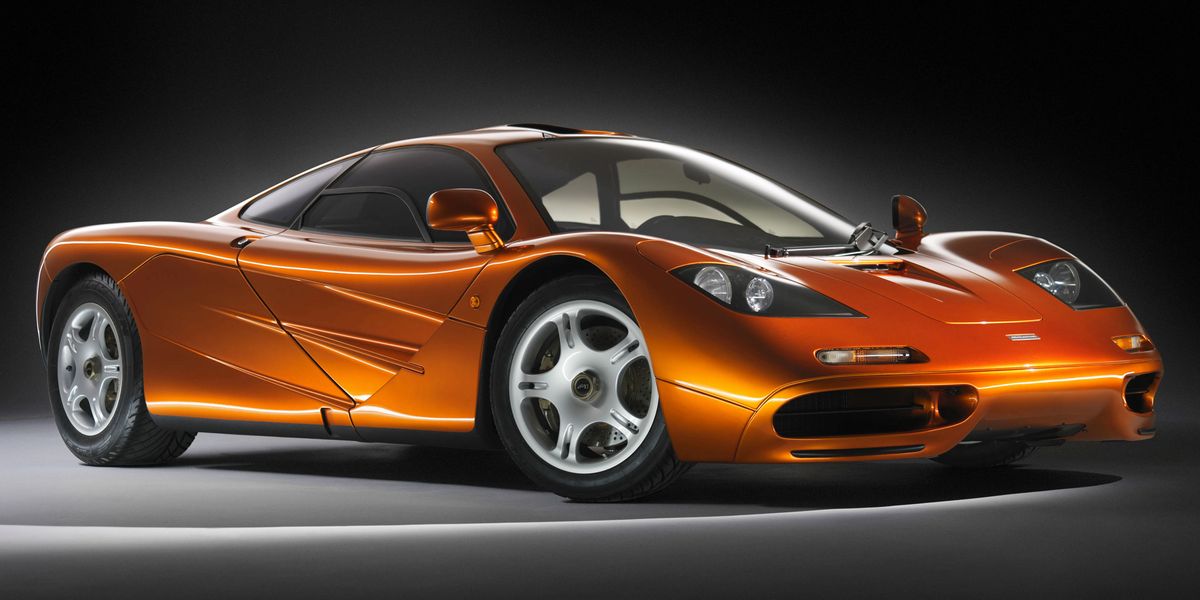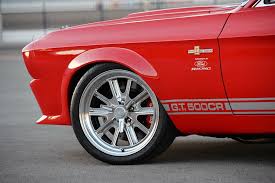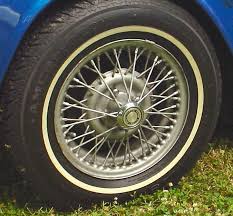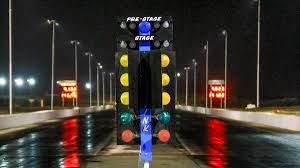A brief history of
Citroen
Introduction
The car manufacturer Citroen has made an important impact on the automotive world. In this article we will give a brief but detailed history of the Citroen marque.
We will look at the origins of Citroen looking at who, why, where and when Citroen was founded. We'll look at the design of the iconic Citroen logo and what are some the more significant Citroen models.
We'll take a glance at what racing history the Citroen has and who some of the most important people have been in the history of Citroen over the years.
Who, where, when and why was
Citroen founded?
Citro�n, a renowned French automobile manufacturer, was founded in 1919 by Andr�-Gustave Citro�n. Born in Paris in 1878, Andr� Citro�n was a visionary industrialist who played a significant role in the development of the automotive industry. Prior to founding Citro�n, he had gained experience in the production of gears and gear-cutting machines, which would later prove instrumental in the manufacturing processes of his cars.
The company was established in Quai de Javel, Paris, and quickly made its mark with innovative engineering and design. One of the key reasons behind Citro�n's founding was Andr� Citro�n's desire to mass-produce affordable vehicles. He was inspired by the methods he observed during a visit to Henry Ford's assembly line in the United States. Citro�n aimed to bring the benefits of mass production to Europe, making cars more accessible to the general public.
In terms of timing, Citro�n's founding took place in the aftermath of World War I when there was a growing demand for transportation solutions. The war had demonstrated the importance of vehicles in various contexts, including military operations and civilian mobility. Andr� Citro�n saw this as an opportunity and sought to capitalize on the market's need for reliable, efficient, and affordable automobiles.
Andr� Citro�n's vision for Citro�n was driven by the goal of combining advanced engineering, mass production, and stylish design. The company quickly gained a reputation for innovation and introduced several groundbreaking models throughout its history. One notable example is the Traction Avant, launched in 1934, which featured front-wheel drive, independent suspension, and a monocoque body. The Traction Avant was revolutionary at the time, setting new standards for handling, comfort, and safety in the industry.
Citro�n's commitment to innovation continued with the introduction of the 2CV (Deux Chevaux) in 1948. The 2CV, designed to be an affordable "people's car," showcased Citro�n's dedication to simplicity, practicality, and efficiency. Its unique design, characterized by a minimalist appearance and a suspension system that allowed it to traverse rough terrains, made it popular among a wide range of customers.
Over the years, Citro�n expanded its lineup with a range of iconic models, including the DS (D�esse) launched in 1955. The DS was a masterpiece of automotive design, featuring innovative hydraulic systems, aerodynamic styling, and advanced technologies. It became a symbol of French luxury and elegance, setting Citro�n apart from its competitors.
In more recent times, Citro�n has continued to innovate with models like the C4 Cactus, known for its distinctive design and focus on comfort, and the fully electric Citro�n �-C4, reflecting the brand's commitment to sustainable mobility.
Today, Citro�n remains an influential player in the automotive industry, representing a blend of French sophistication, avant-garde design, and a dedication to making comfortable and practical vehicles accessible to a wide range of customers.
How did the
Citroen logo originate?

How did the Citroen logo originate?
The logo of Citro�n, the renowned French car manufacturer, has evolved over time, reflecting the company's journey and its commitment to innovation and style. The logo's history dates back to the company's early years and has undergone several transformations, each capturing the essence of Citro�n's brand identity.
The original Citro�n logo featured the company name written in a stylish, elegant font. The typography was accompanied by an artistic representation of a gear, symbolizing Citro�n's engineering expertise and its focus on advanced mechanical systems. This logo captured the spirit of the company's early years, when it aimed to bring mass-produced automobiles with cutting-edge technology to the market.
In the 1930s, Citro�n introduced a new logo design that featured a bold double-chevron emblem. The chevrons were positioned vertically, creating a striking and instantly recognizable symbol. This logo represented Citro�n's ambition to stand out from its competitors and make a bold statement in the automotive industry. The chevrons symbolized a sense of speed and forward motion, capturing the company's innovative spirit.
In subsequent years, the Citro�n logo underwent further modifications. In the 1960s, the logo was simplified with a cleaner, more modern design. The double-chevron emblem remained the focal point but was rendered in a sleeker and more streamlined style. The typography was refined, and the overall logo exuded a sense of elegance and sophistication.
Today, the Citro�n logo continues to evolve, reflecting the brand's contemporary identity. The modern logo retains the iconic double-chevron emblem, but with a three-dimensional effect, adding depth and dimension. The typography has been updated to a bold and minimalist style, enhancing legibility and modernity. This logo captures Citro�n's commitment to combining style, comfort, and cutting-edge technology in its vehicles.
Through its logo, Citro�n has consistently communicated its brand values of innovation, sophistication, and forward-thinking. The logo's evolution reflects the company's journey and its ability to adapt to changing times while staying true to its core identity.
What are some of the significant
Citroen models?
Citro�n, the renowned French car manufacturer, has a rich history of producing significant and iconic models that have left a lasting impact on the automotive industry. From groundbreaking designs to technological innovations, Citro�n has consistently pushed boundaries and delivered vehicles that have captivated drivers worldwide.
One of the most influential models in Citro�n's history is the Traction Avant, introduced in 1934. The Traction Avant was a revolutionary car, featuring front-wheel drive, independent suspension, and a unitary body structure. It set new standards in terms of handling, comfort, and safety, establishing Citro�n as an industry leader in automotive engineering.
In the 1950s, Citro�n unveiled the legendary 2CV (Deux Chevaux). Designed as an affordable and practical "people's car," the 2CV became a symbol of French ingenuity. Its unique appearance, characterized by a minimalist design, a soft suspension system, and a removable fabric roof, made it popular among a wide range of customers. The 2CV's versatility and simplicity made it an icon of practical transportation.
Continuing the trend of innovation, Citro�n introduced the DS (D�esse) in 1955. The DS was a masterpiece of automotive design, with its sleek and aerodynamic body, advanced hydraulic systems, and futuristic interior. It was the first mass-produced car to feature disc brakes, and its self-leveling suspension system provided unmatched comfort and roadholding. The DS quickly became a symbol of French luxury and elegance, cementing Citro�n's reputation as a pioneer in automotive technology.
In the 1970s, Citro�n unveiled the GS, a mid-size car known for its advanced features and fuel efficiency. The GS introduced Citro�n's hydropneumatic suspension system to a wider audience, offering a comfortable and smooth ride. The GS also featured a unique aerodynamic design, making it stand out in the era of boxy cars.
As Citro�n entered the 21st century, it continued to innovate and redefine the automotive landscape. The Citro�n C4 Picasso, introduced in 2006, brought a new level of style and practicality to the compact MPV segment. With its bold design, spacious interior, and innovative features like the panoramic windshield, the C4 Picasso offered a refreshing and modern take on family transportation.
In recent years, Citro�n has embraced electric mobility with models like the Citro�n C-Zero and the Citro�n �-C4. These vehicles represent Citro�n's commitment to sustainable transportation, offering zero-emission driving without compromising on style, comfort, and performance.
Citro�n's most significant models have consistently pushed boundaries, showcased innovative technologies, and captured the essence of French automotive design. From the groundbreaking Traction Avant and the iconic 2CV to the revolutionary DS and the modern electric vehicles, Citro�n has left an indelible mark on the automotive world, demonstrating its ability to combine style, comfort, and forward-thinking engineering.

One of Citroen's Most Iconic Models
Who are some of the most important people in
Citroen's History
Behind the success of Citro�n, there have been influential individuals who have played significant roles in shaping the brand and its iconic models. From visionary engineers to talented designers, these individuals have left their mark on Citro�n's history and contributed to the brand's reputation for innovation and unique design.
One of the key figures in Citro�n's history is Andr�-Gustave Citro�n, the founder of the company. Andr� Citro�n was a visionary industrialist and a pioneer in the automotive industry. He was known for his forward-thinking approach and his ability to embrace mass production techniques. Andr� Citro�n's commitment to innovation led to the development of groundbreaking models like the Traction Avant and the 2CV. His vision and leadership laid the foundation for Citro�n's success and set the company on a path of constant innovation.
Another notable figure in Citro�n's history is Flaminio Bertoni, an Italian-born sculptor and designer who played a crucial role in shaping the brand's iconic models. Bertoni joined Citro�n in 1932 and was responsible for designing some of the most recognizable cars in the company's lineup. He was the creative mind behind the revolutionary Traction Avant and the iconic DS. Bertoni's designs combined functionality with artistic elegance, resulting in cars that were not only technologically advanced but also visually striking. His contributions to Citro�n's design language have left a lasting impact on the brand's identity.
Robert Opron is another significant individual in Citro�n's history, particularly in the realm of automotive design. Opron joined Citro�n in the 1960s and played a key role in shaping the brand's design philosophy. He was the designer behind the Citro�n SM, a luxury grand tourer that blended aerodynamic styling with advanced technologies. Opron's design language emphasized fluid lines and bold forms, reflecting Citro�n's commitment to pushing boundaries in automotive design.
Furthermore, Jean-Pierre Plou�, as the head of Citro�n's design team, has made significant contributions to the brand's modern design language. Plou� has played a crucial role in redefining Citro�n's aesthetic, bringing a fresh and distinctive approach to the brand's lineup. Under his guidance, Citro�n has embraced a design philosophy characterized by flowing lines, expressive features, and a sense of elegance. Plou�'s influence can be seen in models like the C4 Cactus and the C3, which stand out for their bold and distinctive styling.
These individuals, among many others, have shaped Citro�n's identity and contributed to the brand's success. Through their visionary leadership, innovative designs, and commitment to pushing the boundaries of automotive engineering, they have ensured that Citro�n remains at the forefront of automotive innovation and design. Their contributions continue to inspire and influence the brand's models, making Citro�n a symbol of creative expression and innovation in the automotive world.

One of the most influential people in the history of Citroen
Citroen's Racing History
Citro�n has a notable racing history that spans several decades, with the brand's participation in various motorsports disciplines showcasing its engineering prowess and performance capabilities. From rallying to endurance racing, Citro�n has left an indelible mark in the world of motorsports.
One of the most significant chapters in Citro�n's racing history is its dominance in the World Rally Championship (WRC). Citro�n's foray into rallying began in the late 1960s, and the brand achieved remarkable success in the following decades. In the early 2000s, Citro�n formed a formidable partnership with the renowned rally driver S�bastien Loeb and his co-driver Daniel Elena. Together, they embarked on an incredible winning streak, securing numerous driver's and manufacturer's championships for Citro�n.
The Citro�n Xsara WRC, introduced in 2001, played a crucial role in the brand's rallying success. This powerful and agile rally car, equipped with advanced technology and a potent turbocharged engine, proved to be a formidable force on both tarmac and gravel stages. With its distinctive livery and dominant performances, the Citro�n Xsara WRC became an iconic symbol of Citro�n's rallying prowess.
In 2007, Citro�n introduced the C4 WRC, a successor to the Xsara WRC. The C4 WRC continued the brand's winning streak in the WRC, further solidifying Citro�n's position as a force to be reckoned with in rallying. The C4 WRC showcased Citro�n's commitment to technological innovation and performance, incorporating advanced aerodynamics, suspension systems, and engine technologies.
Aside from rallying, Citro�n has also made significant contributions to endurance racing. In the early 1970s, Citro�n participated in the prestigious 24 Hours of Le Mans. The Citro�n SM, a luxurious GT car, was selected as the vehicle for the endurance race. Although the SM did not achieve outright victory, it showcased Citro�n's ability to combine comfort, style, and performance in a competitive racing environment.
More recently, Citro�n has ventured into electric racing with the introduction of the Citro�n C-Zero in the Electric GT Championship. The C-Zero, an all-electric city car, demonstrated Citro�n's commitment to sustainable mobility and its ability to compete in the emerging field of electric racing.
Citro�n's racing history is a testament to the brand's engineering excellence and competitive spirit. From its dominant performances in the World Rally Championship to its participation in endurance racing, Citro�n has consistently showcased its ability to create high-performance vehicles capable of excelling in demanding racing environments. These racing endeavors have not only brought glory to the brand but also provided valuable insights and technological advancements that have trickled down to its road cars, further enhancing the driving experience for Citro�n enthusiasts around the world.
Summary
Citro�n, a renowned French automobile manufacturer, has a rich history of innovation, distinctive design, and racing success. Founded in 1919 by Andr�-Gustave Citro�n, the brand has been at the forefront of automotive engineering, introducing groundbreaking technologies and iconic models that have left an indelible mark on the industry.
Throughout its history, Citro�n has been synonymous with innovation. The brand has consistently pushed the boundaries of automotive design and engineering, introducing revolutionary features such as front-wheel drive, hydraulic suspension, and aerodynamic styling. Citro�n has also gained recognition for its unique design language, combining functionality with artistic elegance. From the iconic Traction Avant and the legendary DS to the modern-day C4 Cactus, Citro�n has created cars that stand out from the crowd.
Citro�n's racing heritage is equally impressive, with the brand's success in disciplines such as rallying and endurance racing. In the World Rally Championship, Citro�n has achieved unparalleled success, dominating the sport with multiple driver's and manufacturer's championships. The brand's rally cars, such as the Citro�n Xsara WRC and the C4 WRC, have showcased Citro�n's engineering prowess and performance capabilities. Additionally, Citro�n's participation in endurance racing, including the 24 Hours of Le Mans, has highlighted the brand's ability to combine speed, comfort, and reliability.
Citro�n's legacy is one of innovation, design excellence, and racing success. With a commitment to pushing boundaries and creating cars that deliver exceptional driving experiences, Citro�n continues to captivate enthusiasts around the world with its unique blend of style, performance, and cutting-edge technology.
View Citroen Car Specifications
More Manufacturer Histories.



